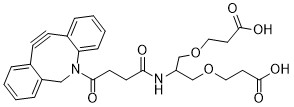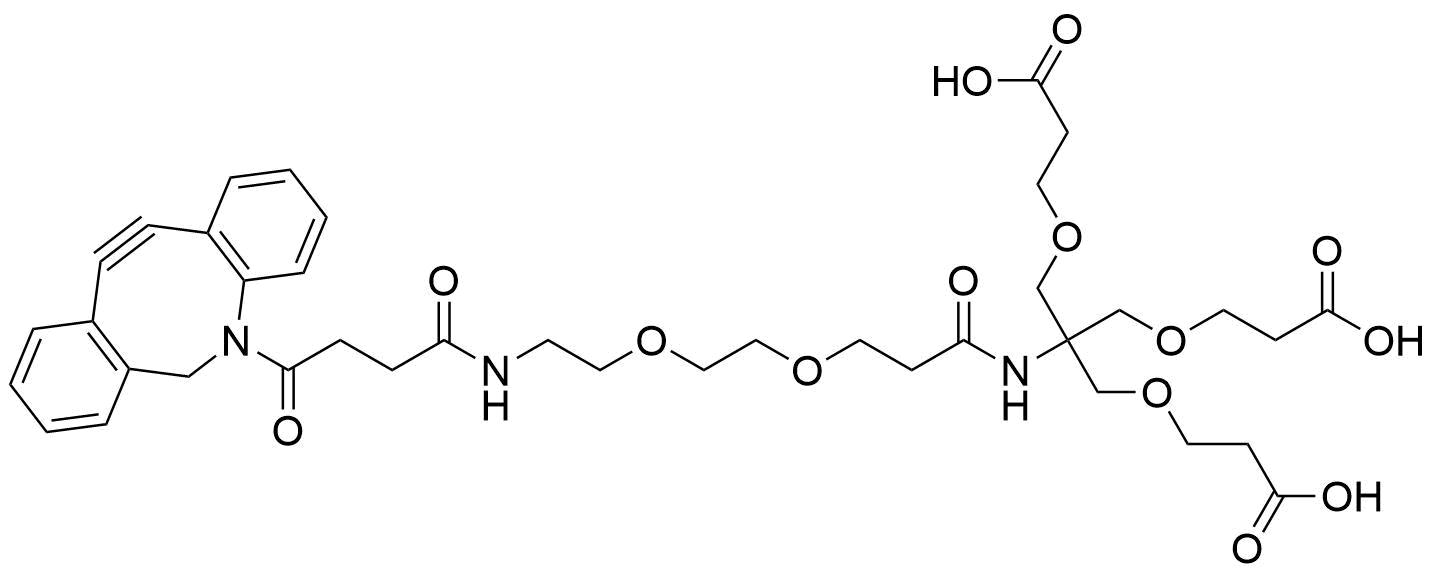Branched PEG DBCO or DBCO Branched PEG features a branched structure that improves solubility and flexibility. Its DBCO groups react efficiently with azides in copper-free click chemistry. Researchers use it for bioconjugation, ADC synthesis, and targeted drug delivery.
Branched PEG DBCO
Branched PEG DBCO
Key Features:
- Branched PEG Structure: Offers enhanced solubility and flexibility compared to linear PEG, reducing steric hindrance for more efficient bioconjugation in complex biological environments.
- Increased Functional Group Density: Supports multivalent binding and higher payload capacity, ideal for applications needing multiple conjugation sites.
- Improved Stability: Provides resistance to degradation, enhancing the durability of conjugated molecules.
- DBCO Functional Groups: Highly reactive with azide groups for efficient, copper-free click chemistry.
- Biocompatibility: The non-toxic PEG backbone ensures safe use in biological systems.
Advantages Over Linear PEG:
- Higher Solubility: Improved solubility in both aqueous and organic solvents.
- Reduced Steric Hindrance: Facilitates more efficient conjugation.
- Greater Functional Group Capacity: Accommodates more functional groups for diverse conjugation needs.
- Increased Stability: Better resistance to degradation.
Applications:
- Bioconjugation: Effective for azide-DBCO copper-free click chemistry.
- Antibody-Drug Conjugates (ADCs): Assists in targeted drug delivery.
- Targeted Drug Delivery: Enhances specific attachment of drugs to targeting molecules.
- Chemical Biology: Supports bioorthogonal tagging and biomolecule modification for research purposes.








